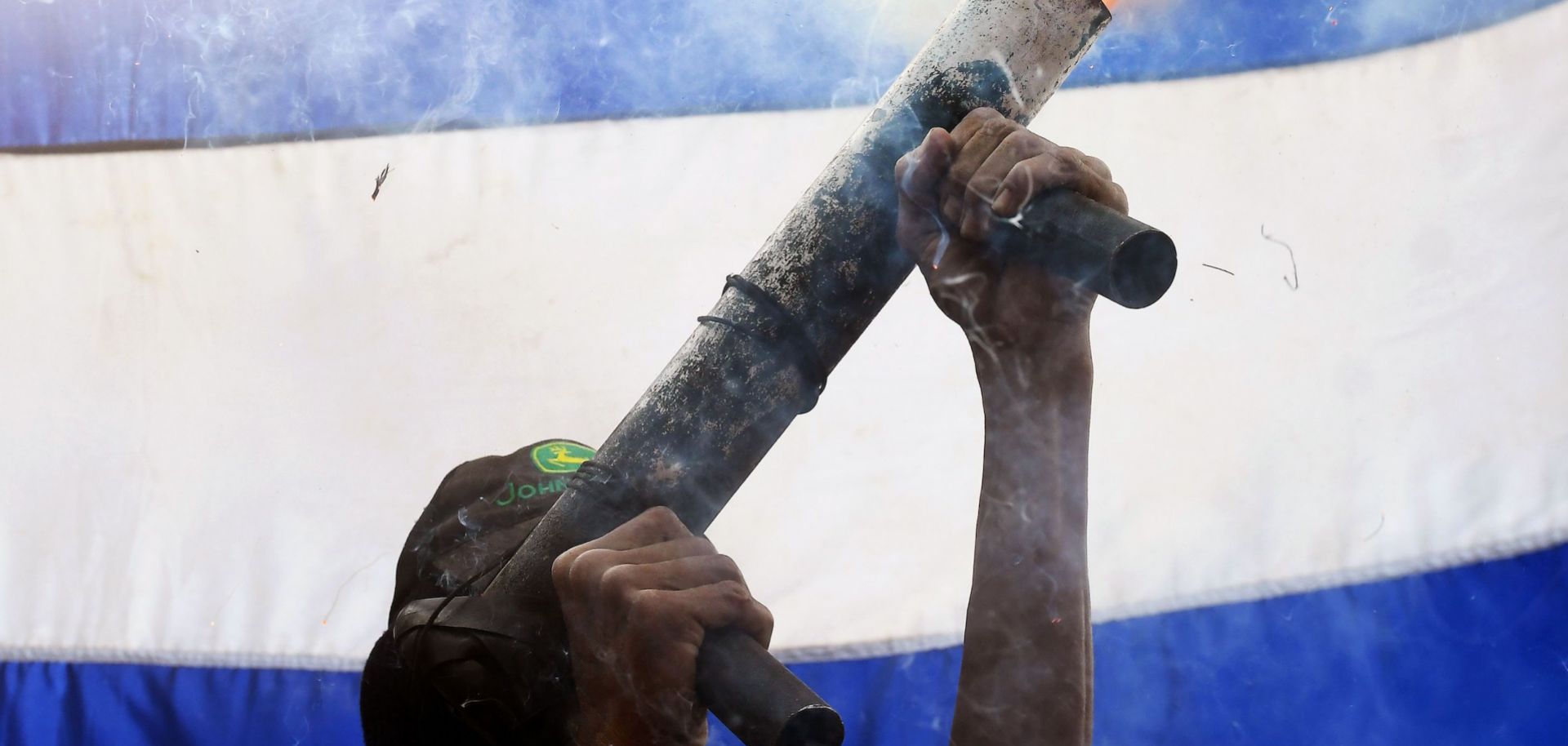ASSESSMENTS
The Protests in Nicaragua Are Bad for the President, Worse for Business
Jun 25, 2018 | 15:54 GMT

A protester in Masaya, Nicaragua, fires a homemade mortar into the air on June 18, 2018. Members of the uprising, which began in April, have seized territory across the country, including parts of the capital, Managua.
(MARVIN RECINOS/AFP/Getty Images)
Highlights
- As protests continue nationwide in Nicaragua, factions in the ruling Sandinista National Liberation Front may start to doubt the incumbent's suitability to run for re-election in 2021.
- The country's persistent transportation problems and violence will subside if the rest of the ruling party manages to oust or sideline Ortega, in keeping with the protesters' demands.
- Even if Ortega manages to quiet the protests in the coming months, violence could flare up again if he makes a bid for re-election in 2021 or if his wife, the current vice president, runs for the presidency.
Subscribe Now
SubscribeAlready have an account?
